Skin rashes can be a source of discomfort, causing symptoms like redness, swelling, itching, or even pain. A variety of factors, such as allergies, irritants, infections, or underlying medical conditions, can trigger them. While severe or persistent rashes warrant medical attention, mild rashes often respond well to home remedies. These remedies utilize natural ingredients to soothe the skin, reduce inflammation, and provide relief.
Some of these home remedies are passed down through generations, they harness the power of nature’s healing properties to soothe inflammation, reduce itching, and promote skin recovery. From the soothing effects of oatmeal to the cooling properties of aloe vera, these ten best home remedies offer a perfect cure to alleviate discomfort and aid in the healing process. Now scroll through and learn about the best home remedies for skin rashes through this article. Grab the best remedy to soothe your skin!
What Exactly Are Skin Rashes?
Skin rashes are a common dermatological condition characterized by changes in the appearance and texture of the skin. They can occur in various forms and may present as red, inflamed, itchy, swollen, or scaly patches on the skin. Any area of the body might develop rashes, which vary in size, severity, and appearance. Several factors, such as allergic reactions, irritants, infections, autoimmune illnesses, or underlying medical issues, can result in skin rashes. They may appear as little patches or as broader body swathes. Rashes can have additional symptoms like itchiness, discomfort, blisters, or dryness.
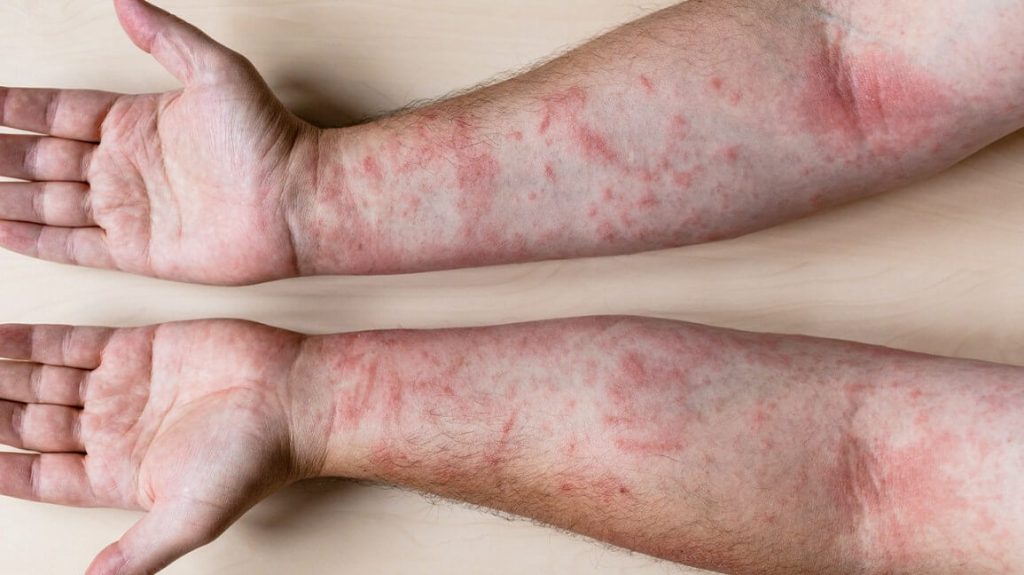
Skin rashes can be identified by their characteristics and appearance. This can reveal information about their underlying cause. For instance, an allergic reaction may result in a raised, itchy rash with a red, bumpy appearance. In contrast, a rash brought on by a fungus may manifest as a ring-shaped or scaly patch of skin. While many skin rashes are transient and go away independently, some may need to be treated by a doctor.
If a rash is persistent, severe, rapidly spreading, or accompanied by other unsettling symptoms, it is crucial to seek medical advice. A medical evaluation, which frequently includes a physical examination and any further testing or laboratory work, is necessary to determine the precise origin of a skin rash. This aids in selecting the best course of treatment, which may involve oral drugs, topical treatments, lifestyle modifications, or addressing the underlying issue.
Some medications, such as antibiotics, anticonvulsants, or nonsteroidal anti-inflammatory drugs (NSAIDs), can cause adverse skin reactions. These reactions may range from mild rashes to more severe conditions like Stevens-Johnson syndrome.
Common Causes Of Skin Rashes
Skin rashes can be brought on by a variety of circumstances, from minor irritants to more serious underlying illnesses. Knowing the typical reasons might help you see the triggers and take the necessary precautions to prevent or manage rashes.

Here are some of the most frequent causes of skin rashes:
- Allergies: Skin rashes can be caused by allergic reactions to certain substances, including pollen, pet dander, specific foods, or medicines. These rashes may also have redness, swelling, and itching.
- Contact Dermatitis: This kind of breakout occurs when the skin comes through direct contact with a painful substance, such as certain metals (like nickel), cosmetics, detergents, or certain plants like poison ivy. It may result in rashes, irritation, and even blisters.
- Autoimmune Conditions: Some autoimmune disorders like psoriasis or lupus may appear as skin rashes. Rashes and inflammation are the results of these circumstances, which trigger the immune system to assault healthy skin cells.
- Eczema: Also known as atopic dermatitis, eczema is a chronic condition that causes inflamed, itchy skin. Numerous things, such as allergies, irritants, temperature fluctuations, or stress, might cause it.
- Infections: Skin infections, such as fungal, bacterial, or viral infections, may result in rashes. Athlete’s foot (fungal infection), impetigo (bacterial infection), and herpes simplex (viral infection) are common instances.
- Insect Bites: Bites from mosquitoes, fleas, bedbugs, or other insects can cause confined skin rashes. The impacted area may be itchy, red, and swollen.
- Heat Rash: Also known as prickly heat, heat rash happens when the sweat glands get blocked, leading to red, itchy bumps on the skin. It frequently occurs in hot, muggy weather or as a result of heavy perspiration.
Fact: Certain skin conditions, such as rashes, can be aggravated or caused by stress and emotional factors. The mind-body connection can influence the skin’s response to various triggers.
10 Best Remedies Home Remedies For Skin Rashes
Scroll through and explore the 10 best home remedies for skin rashes which you can try in your home. These treatments frequently use readily available natural compounds with calming and anti-inflammatory qualities. However, it is essential to remember that because every person’s skin type and condition differs, not every remedy may be effective.
You may get relief from itchiness, redness, and inflammation and aid in the skin’s healing process by including these home remedies in your skincare routine. Let’s explore the effectiveness of these natural remedies in calming and controlling various skin rashes.
10 Best Remedies Home Remedies For Skin Rashes Are:
1. Chamomile
The calming and anti-inflammatory effects of chamomile are widely recognized. Chamomile can be applied topically or consumed as a tea to soothe and treat skin rashes, especially those brought on by eczema or sensitive skin.

What To Do?
- Make some chamomile tea, then let it cool.
- Apply the cooled tea to the rash after soaking a clean towel in it.
- Set a timer for 10 to 15 minutes.
- For calming treatment, repeat a few times each day, especially if you have eczema or sensitive skin rashes.
2. Keep Hygiene And Moisture
To effectively manage skin rashes, optimum hygiene and moisture levels must be maintained. In order to do this, keep the affected area clean. Avoid excessive scratching, and wear breathable clothing. Also, moisturizing the skin is important to prevent dryness and irritation.

What to do?
- Dry off and keep the affected area clean.
- To avoid causing more irritation and possible infection, refrain from scratching the rash.
- Put on comfortable, loose-fitting clothing.
- To support skin health, consume plenty of water and stay hydrated.
3. Tea Tree Oil
The antibacterial qualities of tea tree oil, which is made from the plant’s leaves, are widely known. It can be applied topically to treat rashes on the skin caused by fungal diseases like athlete’s foot or ringworm.
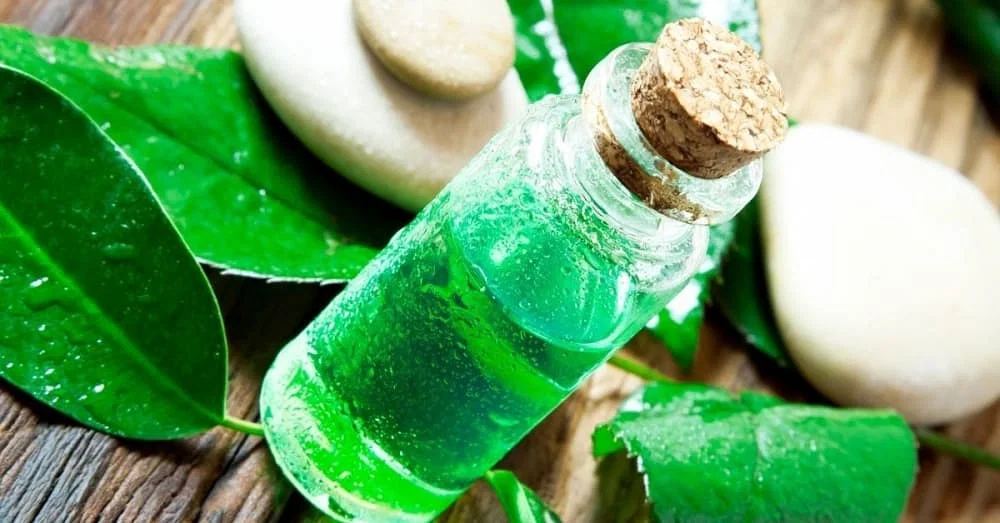
What to do?
- Combine a carrier oil, such as coconut or olive oil, with a few drops of tea tree oil.
- Utilizing a cotton ball, apply the mixture to the rash.
- Let it dry off on your skin.
- Use it two to three times each day to aid with fungus infections and lessen swelling.
4. Witch Hazel
Witch hazel is an organic astringent that may reduce itching and inflammation associated with skin rashes. It is frequently applied to treat insect bites, poison ivy rashes, and other skin irritations.
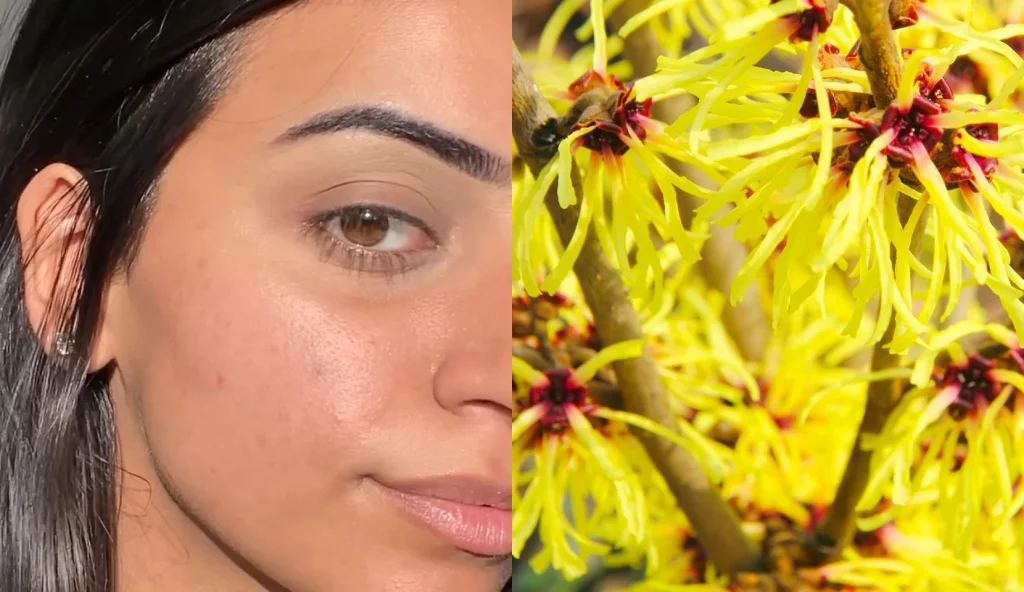
What to do?
- Take some witch hazel on a cotton ball.
- Apply it sparingly to the affected region.
- Give it time to dry your skin.
- Use as needed to reduce swelling and itching, especially for bug or poison ivy attacks.
5. Coconut Oil
Coconut oil is useful for reducing the itching, redness, and inflammation brought on by skin rashes since it has antibacterial and anti-inflammatory qualities. Use it topically to hydrate and calm the skin in the afflicted area.
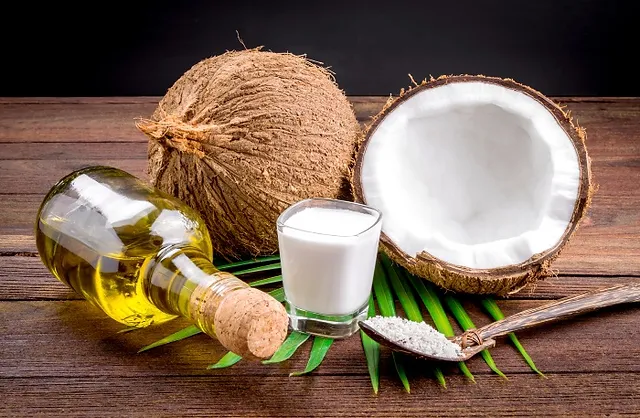
What To Do?
- Take a small amount of organic, unrefined coconut oil in your palms.
- Apply it to the skin that is rashes-prone with gentle massage.
- To benefit from its antibacterial and anti-inflammatory qualities, repeat 2-3 times daily.
6. Calamine Lotion
A topical treatment called calamine lotion contains zinc oxide and iron oxide. Because of its calming effects, it is frequently used to treat rashes that are itchy and dry with weeping breakouts, such as those brought on by poison ivy, bug bites, or allergic reactions.
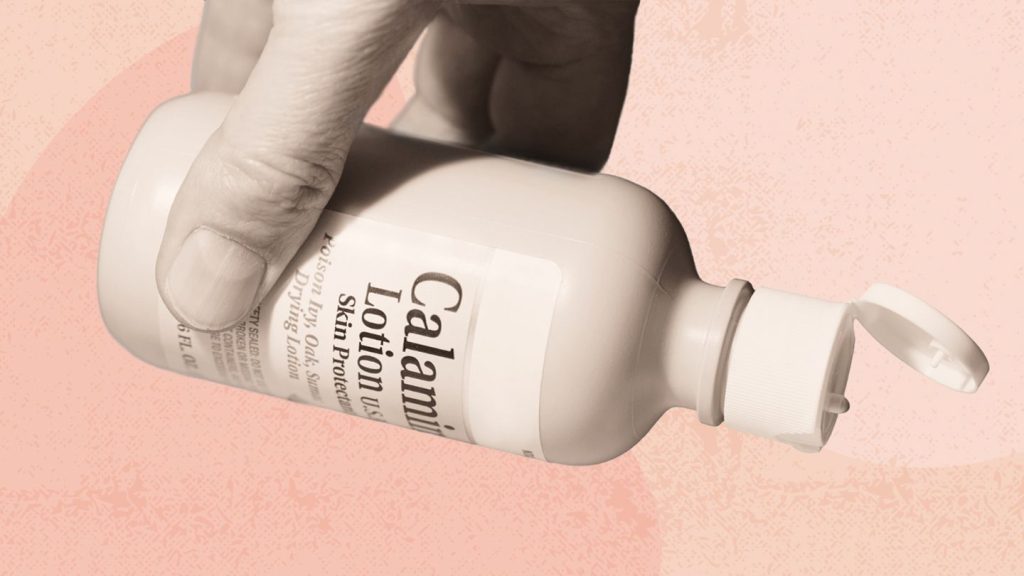
What to do?
- Shake the bottle of calamine lotion vigorously.
- Apply the lotion sparingly on the rash.
- Give it time to dry your skin.
- To treat itching and dry, oozing rashes, reapply as necessary.
7. Apple Cider Vinegar
Apple cider vinegar has antimicrobial and anti-inflammatory properties. It can be applied topically to help relieve itching and lessen inflammation. It also accelerates the healing of skin rashes when diluted with water.
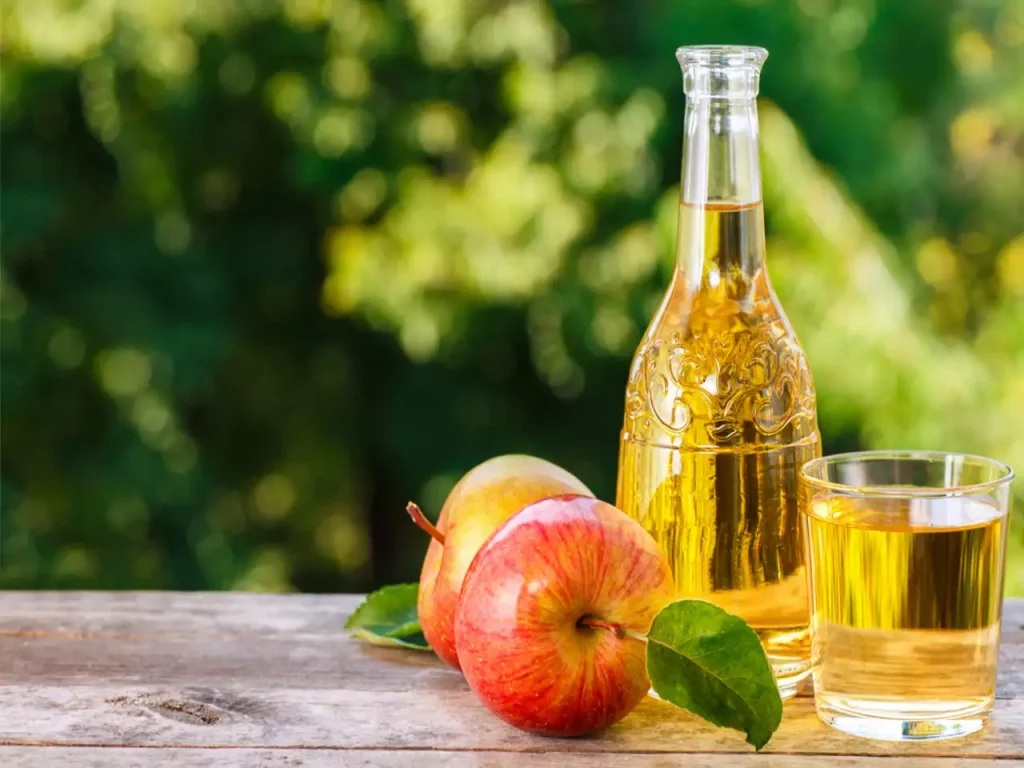
What to do?
- Combine apple cider vinegar and water in an equal amount.
- Apply the solution with a cotton ball to the troubled area.
- After a few minutes, leave it on and then rinse with water.
- Repeat two or three times daily to lessen inflammation and irritation.
8. Cold Compress
An ice pack or cool cloth applied to the affected area will assist in reducing swelling, easing itching, and offer momentary relief from skin rashes.

What to do?
- Wrap an ice pack or a clean rag in a thin towel.
- For 10 to 15 minutes, apply the cold compress to the affected area.
- Several times a day, repeat this method to reduce inflammation and relieve itching.
9. Oatmeal Bath
Taking a bath with colloidal oatmeal can relieve irritation and itching caused by skin rashes. The anti-inflammatory qualities of oatmeal assist to calm the skin and encourage healing.

What to do?
- Fill your bathtub with Lukewarm water.
- According to the package directions, add a proper amount of colloidal oatmeal to the bathwater.
- Spend 15 to 20 minutes soaking in the oatmeal bath.
- Use a soft cloth to pat your skin dry gently.
10. Aloe Vera
Made from the plant’s leaves, Aloe vera gel offers calming and moisturizing qualities. You can use them to topically soothe itchiness, reduce inflammation, and speed up the recovery of skin rashes.
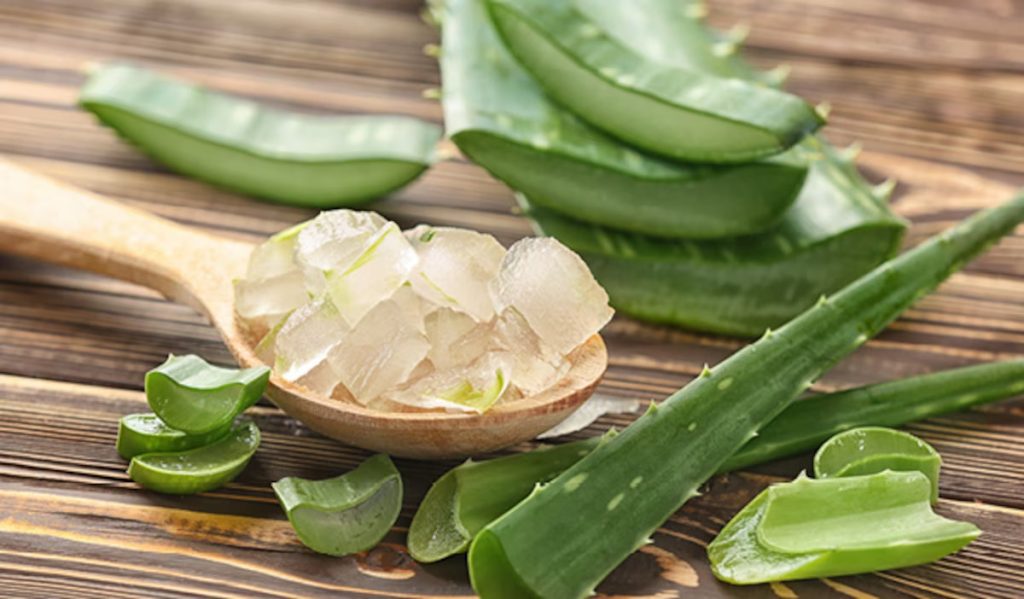
What To Do?
- Take the gel out of an aloe vera leaf by cutting it open.
- Directly saturate the afflicted region with the pure gel.
- Give it time to dry your skin.
- Repeat a couple of times daily to moisturize and calm the skin.
Note: These home remedies can be effective for mild skin rashes, but it’s important to remember that individual results may vary. Always seek medical advice if you experience frequent or severe rashes or have any worries about your skin’s condition.
FAQs [Frequently Asked Questions]
Q: Can dietary changes improve skin rashes?
A: If allergies or sensitivities are the cause of your rashes, dietary adjustments may be helpful. Consult a healthcare professional for specific guidance.
Q: When should I seek medical attention for a skin rash?
A: If the rash is severe, spreading quickly, accompanied by systemic symptoms, not going away with home cures, or if you have any other concerns, see a doctor.
Q: Are home remedies effective for treating skin rashes?
A: Although success varies, home remedies can relieve many mild skin rashes. If the rash continues, gets worse, or is accompanied by troubling symptoms, get medical help.
Q: What are some common home remedies for skin rashes?
A: Typical treatments include calamine lotion, coconut oil, aloe vera, cold compresses, oatmeal baths, and diluted apple cider vinegar.
Q: Can certain kinds of rashes be treated with natural ingredients?
A: Yes, tea tree oil, witch hazel, and chamomile can all treat fungal infections, as well as poison ivy and bug bites.
What Is The Best Way To Get Rid Of Skin Rashes? The Conclusion
With this, get ready to say bye to skin rashes and embrace the perfect cure with these 10 home remedies. From chamomile’s calming effects to aloe vera’s healing powers, these natural remedies offer a gentle and effective way to alleviate itching, reduce inflammation, and restore your skin’s health. You can choose one of them, have a patch test, and start using it. These remedies will ease your discomfort, and you can say hello to a renewed sense of relief. Take control of your skin’s well-being and discover these remedies’ wonders. Reclaim your comfort and confidence with the perfect cure right at your fingertips. So, get your perfect cure and flaunt your skin!
